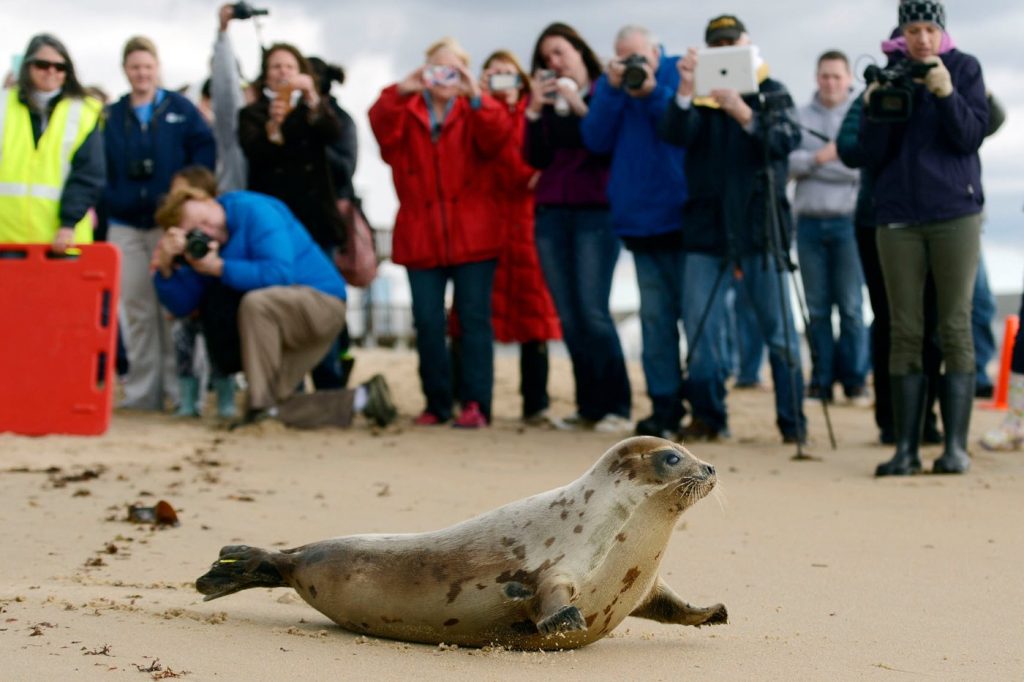Arctic seals face an increased risk of extinction due to climate change, with over half of the world’s bird species in decline due to deforestation and agricultural expansion, according to an annual assessment by the International Union for Conservation of Nature (IUCN). The report highlights the urgent situation for various species and underscores the importance of conservation efforts.
However, there is a positive development concerning green sea turtles, which have experienced significant recovery thanks to decades of dedicated conservation efforts. Rima Jabado, deputy chair of the IUCN Species Survival Commission, emphasized the importance of these recovery stories, suggesting that the same persistent efforts can be applied to other endangered species. Jabado noted that individual actions, such as supporting sustainable practices and conservation initiatives, can contribute to broader efforts in protecting biodiversity.
The IUCN's Red List of Threatened Species is updated annually, reflecting the ongoing assessment of global wildlife data. Andrew Farnsworth, a visiting scientist at the Cornell Lab of Ornithology, remarked on the extensive nature of this work, noting that each update provides more information and contributes to our understanding of species that remain poorly understood by researchers.
The loss of sea ice, crucial for marine mammals such as seals, whales, and polar bears, is a significant concern as it diminishes due to climate change. Kit Kovacs, co-chair of the IUCN's Pinniped Specialist Group, explained that the harsh effects of climate change are escalating extreme weather events that impact humans globally. The IUCN report specifically highlighted harp, hooded, and bearded seals, which have been elevated to a status of greater concern due to their increasing threats of extinction.
The decline in bird populations is particularly concerning. Regions like Madagascar, West Africa, and Central America have reported specific species, including Schlegel’s asity, the black-casqued hornbill, and the northern nightingale-wren, moving to near-threatened status. Overall, around 61% of the world’s bird species are in decline, a trend attributed to a combination of threats, including deforestation, agricultural expansion, invasive species competition, and climate change. Stuart Butchart, chief scientist at BirdLife International, highlighted this alarming statistic, stating that it serves as an essential warning that must not be ignored.
With the upcoming United Nations climate summit in November in Belem, Brazil, attention will be focused on the Amazon rainforest's ecological significance. Despite this, Farnsworth expressed skepticism about world leaders taking decisive action to protect endangered bird species, arguing that achieving a consensus on conservation issues remains challenging.
On a brighter note, the recovery of green sea turtle populations serves as a testament to the effectiveness of human intervention in conservation efforts. Justin Perrault, vice president of research at Loggerhead Marinelife Center in Juno Beach, Florida, reminded that while recovery can take decades to realize, it provides a model for conservation strategies applicable to other endangered species. Nicolas Pilcher, executive director of the Marine Research Foundation, echoed this sentiment, highlighting the contrast in the fortunes of green sea turtles compared to other turtle species like hawksbills and leatherbacks, which are not faring as well.
While the recovery of green sea turtles is a cause for celebration, Pilcher cautioned that threats from climate change and habitat erosion persist, particularly affecting vulnerable communities that receive less conservation funding. Nonetheless, the success of green sea turtles demonstrates that with commitment and effort, positive change is achievable in wildlife conservation efforts.










